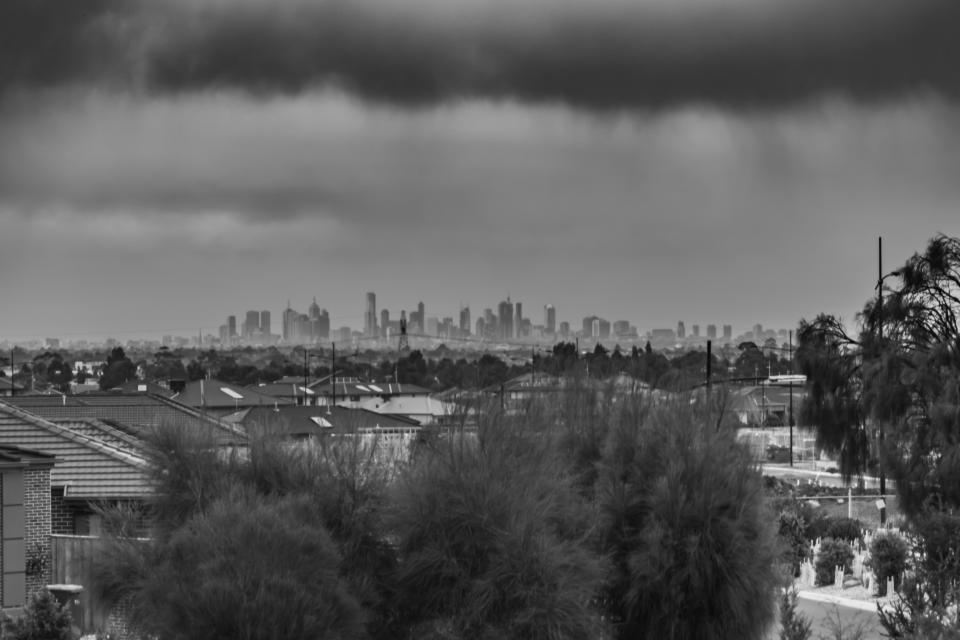Our housing market has officially hit its worst shape since the GFC

Australia’s housing market has recorded the weakest conditions since the Global Financial Crisis, and Sydney is leading the fall.
Across the country, dwelling values have fallen 0.7 per cent over November 2018 but Sydney’s change, -0.4 per cent, was double the national average.
The national softening marks the weakest month-on-month change in dwelling values since the 2007-2008 crisis, reveals today’s CoreLogic home value index.
Property values have fallen 4.2 per cent since their peak in October last year, the home value index for November also found.
Melbourne and Sydney leading the decline
“The downwards pressure on national dwelling values is largely confined to Sydney and Melbourne which together, comprise approximately 55 per cent of the value of Australia’s housing asset class,” CoreLogic head of research Tim Lawless said.
Sydney’s values have fallen 9.5 per cent since their July 2017 peak, in the largest peak-to-trough decline since the 1989-91 recession. Melbourne dwelling values have fallen 5.8 per cent since their November 2017 peak.
However, Sydney and Melbourne’s conditions aren’t borne out across Australia’s “increasingly diverse” other markets, Lawless also noted.
“Hobart and regional Tasmania continue to be the standouts for capital gain.”
In fact, across Brisbane, Adelaide, Hobart, Darwin and Canberra, dwelling values have increased in the last month, admittedly at a slow pace.
“Hobart and regional Tasmania continue to be the standouts for capital gain, with values up 1.7 per cent across both regions over the past three months,” Lawless said.
What’s happening in Sydney and Melbourne?
Several things.
Lenders are tightening up their loans following regulatory interventions introduced in 2015 designed to curb excessive investor activity. Scrutiny from the Royal Commission has also pushed lenders to run the ruler over the loans they write.
“Sydney and Melbourne have also been more affected by the reduction in foreign buying activity.”
These tightening conditions have been more pronounced across Sydney and Melbourne, where investor activity is much more concentrated.
Concerningly, these factors show little sign of letting up. CoreLogic predicts headwinds into the foreseeable future with the power to mute housing market activity.
And this has been happening at the same time as a large pipeline of homes in construction has begun entering the market.
Are all properties impacted?
In addition to variations across markets, there are variations across housing values. The more expensive homes in Sydney and Melbourne are falling fastest, with the top quarter of homes suffering value falls of 9.3 per cent in Sydney.
That’s compared to the 5.7 per cent fall in the cheapest quarter.
It’s a similar story in Melbourne, Lawless said, where the most expensive homes have fallen 9.9 per cent. The cheapest quarter have actually seen a 1.7 per cent increase in value.
As buyers, we’re also less hopeful.
The Westpac House Price Expectations Index has stagnated at a record low for the last three months, and this weak level of sentiment is likely weighing on buyers’ decisions.
Controversial reforms to property investor favourite, negative gearing, isn’t helping the situation, Lawless said.
A negative gearing rollback could diminish demand across the market, while the halving of capital gains tax could also affect the attractiveness of investment, he explained.
So are we heading for another GFC?
It’s unlikely, Lawless said.
While the falls are reminiscent of 2007-08 market activity, the cost of debt is still at its lowest level since the 1960s, even with banks’ recent hikes factored in.
GDP growth is also tracking above expectations, while unemployment is well below average and at its lowest since 2012.
Additionally, population growth continues to stabilise the economy with wages growth beginning to slowly lift.
Make your money work with Yahoo Finance’s daily newsletter. Sign up here and stay on top of the latest money, news and tech news.
Now read: Home values to nosedive up to $194,000 in this Aussie city
Now read: The economies of these major Aussie cities are pulling ahead

 Yahoo Finance
Yahoo Finance 
